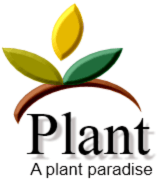Duchesnea: Identification, plant Growth and reproduction

Learn about the plant
Family: Droseraceae. Genus around 100 types of rosette-creating or scrambling, time tested, or herbaceous, insectivorous perennials, also such as some annuals, found in poor, acid, boggy soil throughout the world, but mainly in Australia. Drosera (Sundew) bears a rosette of foliage engrossed in red-colored hair. These hairs secrete the juices which both snare and absorb the insects. Drosera binata is an Australian Sundew (Forked Sundew) which bears long and deeply-lobed leaves. Stem simple results in basal, erect, stipuled, petiole to 14 ins lengthy, glabrous, blade forked into 2 or 4 sectors, sectors linear, to 6 ins extended scape to 20 inches great or even more, glabrous, branched in the upper part, several-flowered petals 5, white-colored, to 1/2 inch lengthy. Carnivorous. The American Drosera capensis (Cape Sundew) has undivided simply leaves. Stems quick to elongate simply leaves jampacked, stipuled, petiole dilated at basic, glabrous or sparsely pubescent, 1.5 – 4 in. Extended, blade linear to spatulate-linear, 1.5-2.25 in. Lengthy scape 8-14 inches great, hairy, glandular in higher component, 6-20 flowered petals 5, purple, to 3/8 inches lengthy. Carnivorous.
Plant growth conditions
Duchesnea needs a regular warmth in summer – a minimum of 40 F in the winter months. Brightly lit place far from direct sunlight—utilization in a big backyard. Grow in acidic potting mix.
Maintain garden compost moist in any way time. Lessen irrigating in the wintertime. Misting is necessary. Use rainwater.
Plant reproduction
Break down plants in early spring. Take leaf cuttings. Sow seed at 50-55 F (10-13 C) once ripe.
